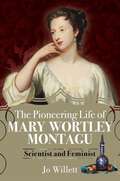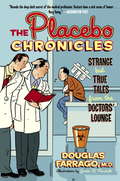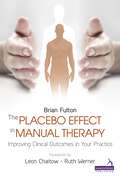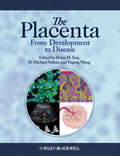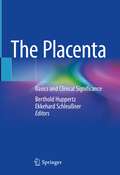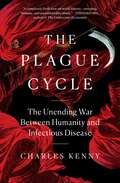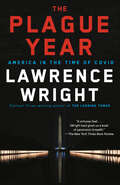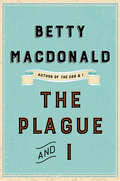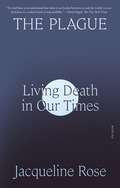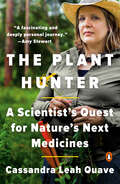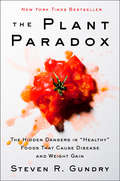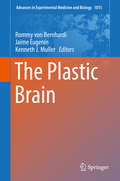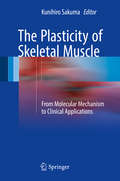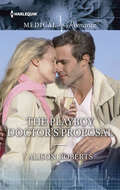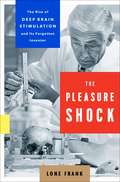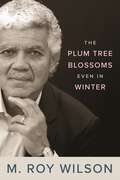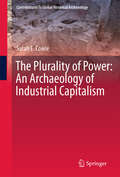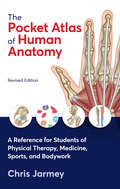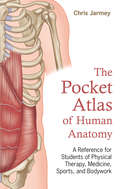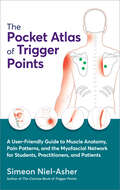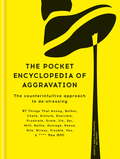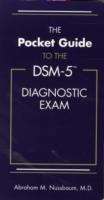- Table View
- List View
The Pioneering Life of Mary Wortley Montagu: Scientist and Feminist
by Jo WillettThe first biography to look at the early feminist and radical Mary Wortley Montagu, who successfully introduced Britain to the inoculation against the smallpox virus.300 years ago, in April 1721, a smallpox epidemic was raging in England. Lady Mary Wortley Montagu knew that she could save her 3-year-old daughter using the process of inoculation. She had witnessed this at first hand in Turkey, while she was living there as the wife of the British ambassador. She also knew that by inoculating - making her daughter the first person protected in the West - she would face opposition from doctors, politicians and clerics. Her courageous action eventually led to the eradication of smallpox and the prevention of millions of deaths. But Mary was more than a scientific campaigner. She mixed with the greatest politicians, writers, artists and thinkers of her day. She was also an important early feminist, writing powerfully and provocatively about the position of women. She was best friends with the poet Alexander Pope. They collaborated on a series of poems, which made her into a household name, an ‘It Girl.' But their friendship turned sour and he used his pen to vilify her publicly. Aristocratic by birth, Mary chose to elope with Edward Wortley Montagu, whom she knew she did not love, so as to avoid being forced into marrying someone else. In middle age, her marriage stale, she fell for someone young enough to be her son - and, unknown to her, bisexual. She set off on a new life with him abroad. When this relationship failed, she stayed on in Europe, narrowly escaping the coercive control of an Italian con man. After twenty-two years abroad, she returned home to London to die. The son-in-law she had dismissed as a young man had meanwhile become Prime Minister.
The Placebo Chronicles: Strange but True Tales From the Doctor's Lounge
by Douglas FarragoTrue Tales of the ridiculous, the silly, and the just plain weird cases doctors face—lampooning the medical bureaucracy that makes practicing medicine and getting medical care such a headache. Doctors have a sick sense of humor. This is the deep, dark, and hilarious secret of the medical profession revealed by the irreverent Dr. Douglas Farrago in his popular satirical magazine,Placebo Journal—affectionately known by its thousands of fanatic readers as “Madmagazine for doctors” and called, byU. S. News. com, “raunchy, adolescent, and very funny. ” Now, inThe Placebo Chronicles, Dr. Farrago has compiled the best of the most outrageous and uproarious true stories to come out of the ERs and examination rooms of doctors all over the country. Submitted by actual physicians, these are the stories they tell each other at cocktail parties and in doctors’ lounges, trading sidesplitting and truly unusual tales of their most embarrassing medical moments, the grossest things they’ve ever seen in medicine, their favorite Munchausen patients, and much more, including “The X-Ray Files”—mind-boggling anecdotes and images of the oddest foreign objects doctors have removed from patients. Not for the faint of heart, the humor inThe Placebo Chroniclesis brutally funny—just what the doctor ordered to guard against the ill effects of an M. D. ’s worst enemies: the Medical Axis of Evil, a. k. a. drug companies, HMOs, and malpractice insurers. Fully illustrated with fake advertisements—for pseudopharmaceuticals like OxyCotton Candy and Indifferex (the mediocre antidepressant)—this refreshingly honest collection invites doctors and patients alike to share the laughter, a liberal dose of the very best medicine.
The Placebo Effect in Manual Therapy: Improving Clinical Outcomes in Your Practice
by Catherine Ryan Diane Lee Louise Tremblay Nancy Keeney Smith Brian FultonNumerous studies have made the 'placebo effect' the most-studied healing phenomenon known to mankind. In The Placebo Effect in Manual Therapy Brian Fulton has drawn on these studies to provide an essential resource for all practitioners who work on a one to one basis with their clients. Those manual therapists who learn from this book will find that their new understanding can lead to improved clinical outcomes for their clients.The Placebo Effect in Manual Therapy presents a knowledge-based approach to augmenting your patients' own healing systems. It explains how to:maximize the placebo response in your patients, using knowledge from 60 years of research"turn on" an individual's inner healing system, even with challenging patientsincrease your success rate and your patients' health outcomes within your current methods of practice
The Placenta
by D. Michael Nelson Yuping Wang Helen KayThe Placenta: From Development to Disease examines research into placental function and its clinical implications to provide a springboard for improving clinical practice and enhancing medical research. Influential information is extracted from the compelling narrative by the use of 'take home' features including: Clinical Pearls - point to important issues in clinical practiceResearch Spotlights - highlight key insights into placental understandingTeaching Points - explain basic concepts for novice readersThe Placenta: From Development to Disease is ideal for both experienced clinicians and researchers and those new to the field. Anyone who needs to understand the central importance of the placenta in the well being of their maternal and fetal patients should read this book.
The Placenta and Human Developmental Programming
by Graham J. Burton David J. P. Barker Ashley Moffett Kent ThornburgDevelopmental programming is a rapidly advancing discipline of great importance to basic scientists and health professionals alike. This text integrates, for the first time, contributions from world experts to explore the role of the placenta in developmental programming. The book considers the materno-fetal supply line, and how perturbations of placental development impact on its functional capacity. Chapters examine ways in which environmental, immunological and vascular insults regulate expression of conventional and imprinted genes, along with their impact on placental shape and size, transport, metabolism and endocrine function. Research in animal models is integrated with human clinical and epidemiological data, and questions for future research are identified. Transcripts of discussions between the authors allow readers to engage with controversial issues. Essential reading for researchers in placental biology and developmental programming, as well as specialists and trainees in the wider field of reproductive medicine.
The Placenta: Basics and Clinical Significance
by Berthold Huppertz Ekkehard SchleußnerThis book is a comprehensive work that spans the gap between basic knowledge and clinical significance of the placenta. Starting from normal development, it deals with the histopathology of the placenta, leads the reader on to functional disorders and insufficiencies and explains their effects on mother and child. Based on this, the authors convey in a practical and user-friendly manner everything worth knowing about diagnostics and therapy and provide valuable information for the optimal care of the pregnant patient.
The Plague Cycle: The Unending War Between Humanity and Infectious Disease
by Charles KennyA vivid, sweeping, and &“fact-filled&” (Booklist, starred review) history of mankind&’s battles with infectious disease that &“contextualizes the COVID-19 pandemic&” (Publishers Weekly)—for readers of the #1 New York Times bestsellers Yuval Harari&’s Sapiens and John Barry&’s The Great Influenza.For four thousand years, the size and vitality of cities, economies, and empires were heavily determined by infection. Striking humanity in waves, the cycle of plagues set the tempo of civilizational growth and decline, since common response to the threat was exclusion—quarantining the sick or keeping them out. But the unprecedented hygiene and medical revolutions of the past two centuries have allowed humanity to free itself from the hold of epidemic cycles—resulting in an urbanized, globalized, and unimaginably wealthy world. However, our development has lately become precarious. Climate and population fluctuations and factors such as global trade have left us more vulnerable than ever to newly emerging plagues. Greater global cooperation toward sustainable health is urgently required—such as the international efforts to manufacture and distribute a COVID-19 vaccine—with millions of lives and trillions of dollars at stake. &“A timely, lucid look at the role of pandemics in history&” (Kirkus Reviews), The Plague Cycle reveals the relationship between civilization, globalization, prosperity, and infectious disease over the past five millennia. It harnesses history, economics, and public health, and charts humanity&’s remarkable progress, providing a fascinating and astute look at the cyclical nature of infectious disease.
The Plague Year: America in the Time of Covid
by Lawrence WrightFrom the Pulitzer Prize–winning author of The Looming Tower: an unprecedented, momentous account of Covid-19—its origins, its wide-ranging repercussions, and the ongoing global fight to contain it From the fateful first moments of the outbreak in China to the storming of the U.S. Capitol to the extraordinary vaccine rollout, Lawrence Wright&’s The Plague Year tells the story of Covid-19 in authoritative, galvanizing detail and with the full drama of events on both a global and intimate scale, illuminating the medical, economic, political, and social ramifications of the pandemic. Wright takes us inside the CDC, where a first round of faulty test kits lost America precious time . . . inside the halls of the White House, where Deputy National Security Adviser Matthew Pottinger&’s early alarm about the virus was met with confounding and drastically costly skepticism . . . into a Covid ward in a Charlottesville hospital, with an idealistic young woman doctor from the town of Little Africa, South Carolina . . . into the precincts of prediction specialists at Goldman Sachs . . . into Broadway&’s darkened theaters and Austin&’s struggling music venues . . . inside the human body, diving deep into the science of how the virus and vaccines function—with an eye-opening detour into the history of vaccination and of the modern anti-vaccination movement. And in this full accounting, Wright makes clear that the medical professionals around the country who&’ve risked their lives to fight the virus reveal and embody an America in all its vulnerability, courage, and potential. In turns steely-eyed, sympathetic, infuriated, unexpectedly comical, and always precise, Lawrence Wright is a formidable guide, slicing through the dense fog of misinformation to give us a 360-degree portrait of the catastrophe we thought we knew as we lived through it.
The Plague and I
by Betty MacDonaldA pre-WW2 American humorist contracts TB and “writes about her seclusion in a way that is painfully, barkingly funny” (Lissa Evans, The Guardian).“Getting tuberculosis in the middle of your life is like starting downtown to do a lot of urgent errands and being hit by a bus. When you regain consciousness you remember nothing about the urgent errands. You can’t even remember where you were going.”Thus begins Betty MacDonald’s memoir of her year in a sanatorium just outside Seattle battling the “White Plague.” MacDonald uses her offbeat humor to make the most of her time in the TB sanatorium—making all of us laugh in the process.“Improbably funny. . . equally remarkable.” ―Steve Donoghue, Open Letters Monthly“Can you imagine writing a whole book about being forbidden to do anything other than lie in bed? But Betty does, and she somehow makes it a riveting chronicle.” ―Lory Widmer Hess, Emerald City Book Review“An appetizing, well-seasoned feast. MacDonald’s sharp, witty observations as she spends almost a year in The Pines Clinic, outside of Seattle, are perfectly pitched . . . with a huge dollop of idiosyncratic humour . . . MacDonald is an impressive and engaging storyteller.” ―Jules Morgan, The Lancet
The Plague and I
by Betty MacdonaldBetty MacDonald had divorced her first husband, (meet him in "The Egg and I," which is available from Bookshare) and had moved back home with her two girls. She was working in an office when the overwhelming fatigue and exhausting cough began. Without much money, she had few choices, which is why she went to The Pines. This biographical book provides us with detailed looks at how tuberculosis was treated during the 1940s and what sanatoriums were like. Other books for adults and children by Betty MacDonald are available from Bookshare.
The Plague: Living Death in Our Times
by Jacqueline RoseA slim, heart-wrenching, and rousing new book from the leading feminist writer Jacqueline Rose.In early 2020, when the COVID-19 pandemic began to infiltrate public consciousness, sales of The Plague, the classic novel by French philosopher Albert Camus, skyrocketed. At the same time, the virus’s toll surged exponentially. Amid the harrowing loss, many sensed a glimmer of possibility—the potential for radical empathy wrought by shared experience—even as the death-dealing divisions of class, race, gender, and citizenship were underscored like never before. We have been through a time of ‘living death’ when, for millions across the globe, untold horror has seemed to infiltrate the very air we breathe.Jacqueline Rose’s trenchant new book unravels recent history via the lives and works of three extraordinary thinkers—Albert Camus, Sigmund Freud, and Simone Weil, each one afflicted by catastrophe. Their politics and private griefs, the depth of their understanding, fling open a window into our present crises. Rose, one of the most insightful thinkers on politics and psychoanalysis alike, has written a story of unusual range, spanning World War II to Russia’s invasion of Ukraine, surging domestic violence to emboldened anti-racist protest, the Spanish influenza to Omicron, Boris Johnson’s deranged optimism to Vladimir Putin’s megalomania. The Plague: Living Death In Our Times enacts a psychic reckoning for our moment and for the future to be forged in its aftermath.
The Planning Role in Stretching the City: A Tale of Two London Neighbourhoods (SpringerBriefs in Geography)
by Shlomit Flint AsheryThis research aims to uncover new insights into minority housing strategies and their impact on densely populated urban areas. The study assumes that as space becomes scarce, inter and intra groups interactions in the urban space motivate people to maximize the utility of the resources at their disposal. This ‘stretch’ of the built environment provides them with critical selective advantages and a sense of security and belonging. Based on two neighbourhoods in London, it contributes to our understanding of housing decisions in the context of illegality and shows the capacity of a given urban form for adaptation: It creates a new semi-private/public space, partly segregated yet deeply integrated; a sphere that, on the one hand, enables traditional ‘nested’ places and, on the other, a fertile environment for integration. This manuscript contributes two new ideas to the knowledge base of residential selections and the geography of opportunities. The first is a detailed analysis of a hyper-segregation/integration pattern resulting from complementary residential strategies operating at the individual unit level. The second is multidimensional stretching, a bottom-up initiation that allows individuals to maximize resources through territorial and spatial practices.
The Plant Hunter: A Scientist's Quest for Nature's Next Medicines
by Cassandra Leah QuaveA leading medical ethnobotanist tells us the story of her quest to develop new ways to fight illness and disease through the healing powers of plants in this uplifting and adventure-filled memoir. Plants are the basis for an array of lifesaving and health-improving medicines we all now take for granted. Ever taken an aspirin? Thank a willow tree for that. What about life-saving medicines for malaria? Some of those are derived from cinchona and wormwood. In today's world of synthetic pharmaceuticals, scientists and laypeople alike have lost this connection to the natural world. But by ignoring the potential of medicinal plants, we are losing out on the opportunity to discover new life-saving medicines needed in the fight against the greatest medical challenge of this century: the rise of the post-antibiotic era. Antibiotic-resistant microbes plague us all. Each year, 700,000 people die due to these untreatable infections; by 2050, 10 million annual deaths are expected unless we act now. No one understands this better than Dr. Cassandra Quave, whose groundbreaking research as a leading medical ethnobotanist--someone who identifies and studies plants that may be able to treat antimicrobial resistance and other threatening illnesses--is helping to provide clues for the next generation of advanced medicines. In The Plant Hunter, Dr. Quave weaves together science, botany, and memoir to tell us the extraordinary story of her own journey. Traveling by canoe, ATV, mule, airboat, and on foot, she has conducted field research in the flooded forests of the remote Amazon, the murky swamps of southern Florida, the rolling hills of central Italy, isolated mountaintops in Albania and Kosovo, and volcanic isles arising out of the Mediterranean—all in search of natural compounds, long-known to traditional healers, that could help save us all from the looming crisis of untreatable superbugs. And as a person born with multiple congenital defects of her skeletal system, she's done it all with just one leg. Filled with grit, tragedy, triumph, awe, and scientific discovery, her story illuminates how the path forward for medical discovery may be found in nature's oldest remedies.
The Plant Paradox: The Hidden Dangers in "Healthy" Foods That Cause Disease and Weight Gain (The Plant Paradox #1)
by Dr. Steven R Gundry, MDFrom renowned cardiac surgeon Steven R. Gundry, MD, the New York Times bestselling The Plant Paradox is a revolutionary look at the hidden compounds in "healthy" foods like fruit, vegetables, and whole grains that are causing us to gain weight and develop chronic disease.Most of us have heard of gluten—a protein found in wheat that causes widespread inflammation in the body. Americans spend billions of dollars on gluten-free diets in an effort to protect their health. But what if we’ve been missing the root of the problem? In The Plant Paradox, renowned cardiologist Dr. Steven Gundry reveals that gluten is just one variety of a common, and highly toxic, plant-based protein called lectin. Lectins are found not only in grains like wheat but also in the “gluten-free” foods most of us commonly regard as healthy, including many fruits, vegetables, nuts, beans, and conventional dairy products. These proteins, which are found in the seeds, grains, skins, rinds, and leaves of plants, are designed by nature to protect them from predators (including humans). Once ingested, they incite a kind of chemical warfare in our bodies, causing inflammatory reactions that can lead to weight gain and serious health conditions.At his waitlist-only clinics in California, Dr. Gundry has successfully treated tens of thousands of patients suffering from autoimmune disorders, diabetes, leaky gut syndrome, heart disease, and neurodegenerative diseases with a protocol that detoxes the cells, repairs the gut, and nourishes the body. Now, in The Plant Paradox, he shares this clinically proven program with readers around the world.The simple (and daunting) fact is, lectins are everywhere. Thankfully, Dr. Gundry offers simple hacks we easily can employ to avoid them, including:Peel your veggies. Most of the lectins are contained in the skin and seeds of plants; simply peeling and de-seeding vegetables (like tomatoes and peppers) reduces their lectin content.Shop for fruit in season. Fruit contain fewer lectins when ripe, so eating apples, berries, and other lectin-containing fruits at the peak of ripeness helps minimize your lectin consumption.Swap your brown rice for white. Whole grains and seeds with hard outer coatings are designed by nature to cause digestive distress—and are full of lectins.With a full list of lectin-containing foods and simple substitutes for each, a step-by-step detox and eating plan, and delicious lectin-free recipes, The Plant Paradox illuminates the hidden dangers lurking in your salad bowl—and shows you how to eat whole foods in a whole new way.
The Plastic Brain
by Rommy Von Bernhardi Jaime Eugenín Kenneth J MullerA comprehensive overview of the many factors that can influence brain plasticity throughout the lifespan. Addresses perinatal plasticity, functional state plasticity, injury-induced plasticity, and stressor-induced plasticity. Because it looks at so many aspects of the field, this volume will serve as a great resource for students as well as researchers interested in expanding their knowledge. The volume comes out as an integrated view based in the expertise of Ibero American neuroscientists working in the field.
The Plasticity of Skeletal Muscle
by Kunihiro SakumaThis book discusses recent advances and various topics in plasticity of skeletal muscle from the perspectives of morphology, biological function, and clinical applications. Skeletal muscle is a highly plastic organ to adapt to environmental various demands, appears to endocrine various myokines, which flow into blood to protect the recognizing function of brain and inhibit the appearance of several cancer tumorigenesis. The book deals with current stem-cell based, pharmacological, and nutritional therapies for muscle wasting (sarcopenia, cachexia, and muscular dystrophy). It also explains the roles of biological mediators such as PGC-1, transient receptor potential cation channels (TRPC), and AMPK in modulating muscle function. The functional roles of ubiquitin-proteasome system, autophagy-dependent signaling in muscle homeostasis, ribosome biogenesis, and redox regulation of mechanotransduction to modulate skeletal muscle mass are also covered. It is an essential resource for physicians, researchers, post-docs as well as graduate students in the field of sports science including rehabilitation therapy, exercise physiology, exercise biochemistry, and molecular biology dealing with skeletal muscle.
The Playboy Doctor's Proposal
by Alison RobertsEligible bachelor doctor seeks wife.It may not be entirely true, but Dr. Ryan Fisher has a reputation for being a bit of a playboy. His charm wins over the patients and the female staff-all except one woman. The one he really wants. Dr. Hannah Jackson avoids men like Ryan Fisher, instinctively protecting herself from heartbreak. When she discovers they are both heading to Crocodile Creek, she can't believe her bad luck!An emergency forces them to work together, and Hannah discovers a different side of Ryan. She's soon tempted to let her guard down as she realizes they would make a great team- professionally and personally.
The Pleasure Shock: The Rise of Deep Brain Stimulation and Its Forgotten Inventor
by Lone FrankThe electrifying, forgotten history of Robert Heath's brain pacemaker, investigating the origins and ethics of one of today's most promising medical breakthroughs: deep brain stimulationThe technology invented by psychiatrist Robert G. Heath at Tulane University in the 1950s and '60s has been described as one of "the most controversial yet largely undocumented experiments in US history"--controversial to us because Heath's research subjects included incarcerated convicts and gay men who wished to be "cured" of their sexual preference; controversial in its day because his work was allegedly part of MKUltra, the CIA's notorious "mind control" project. As a result, Heath's cutting-edge research and legacy were put under lock and key, buried in Tulane's archives. The ethical issues raised by his work have also been buried: This very same experimental treatment is becoming mainstream practice in modern psychiatry for everything from schizophrenia, anorexia, and compulsive behavior to depression, aggression, anxiety, and even drug and alcohol addiction.In the first book to tell the full story, the award-winning science writer Lone Frank has uncovered lost documents and accounts of Heath's pioneering efforts. She has tracked down surviving colleagues and patients. And she has delved into the current embrace of deep brain stimulation by scientists and patients alike. What has changed? Why do we today unquestioningly embrace this technology as a cure? How do we decide what is a disease of the brain to be cured and what should be allowed to remain unprobed and unprodded? The Pleasure Shock weaves together biography, neuroscience, psychology, the history of science, and medical ethics to explore our views of the mind and the self. How do we decide whether changes to the brain are acceptable therapy or are simply bias and bigotry?
The Plum Tree Blossoms Even in Winter
by M. Roy WilsonFrom a childhood marked by loneliness and want, M. Roy Wilson forged an extraordinary life of accomplishment and acclaim. His accomplishments include the presidencies of four universities, dean of two medical schools, and deputy director of one of the National Institutes of Health's twenty-seven Centers and Institutes. Through this inspiring and deeply personal story of struggle and success, Wilson shares insights gleaned through his life experiences, many of which helped others reach their highest potential as students, faculty, physicians and people. Born to a Japanese mother and Black father, much of M. Roy Wilson's childhood in Japan was marked by parental absence, sexual abuse, extended periods as a runaway, physical confrontations and frequent moves. He was often forced to play the role of caregiver to his younger sister, and together they grew to depend on each other for support until their teenage years. Under the guidance of his high school English teacher, Wilson turned his life around and obtained an MD from Harvard Medical School. His adult life as a physician was ironically beset with significant health challenges, including diagnoses of cardiomyopathy that rendered him uninsurable, a potentially blinding eye disease, and cancer that at first was thought to be terminal. Having developed a veneer of invulnerability as a child, he kept these medical diagnoses a secret until now. Like the plum tree that blooms even during dark and dreary times, Wilson overcame his childhood challenges and later, his health issues, to achieve distinction in medicine, higher education, and global health research. The journey to this unlikely outcome is an engrossing tale of outside forces that shape racial and cultural identity, the importance of mentorship and friendship, and the lasting impact of an unstable and often heartbreaking family dynamic.
The Plurality of Power
by Sarah CowieHow do people experience power within capitalist societies? Research presented here explicitly addresses the notion of pluralistic power, which encompasses both productive and oppressive forms of power and acknowledges that nuanced and multifaceted power relations can exist in combination with binary dynamics such as domination and resistance. This volume addresses growing interests in linking past and present power relationships engendered by capitalism and in conducting historical archaeology as anthropology. The Plurality of Power: Industrial Capitalism and the Nineteenth-Century Company Town of Fayette, Michigan, explores the subtle distribution of power within American industrial capitalism through a case study of a company town. Issues surrounding power and agency are explored in regard to three heuristic categories of power. In the first category, the company imposed a system of structural, class-based power that is most visible in hierarchical differences in pay and housing, as well as consumer behavior. A second category addresses disciplinary activities surrounding health and the human body, as observed in the built environment, medical artifacts, disposal patterns of industrial waste, incidence of intestinal parasites, and unequal access to healthcare. The third ensemble of power relations is heterarcical and entwined with non-economic capital (social, symbolic, and cultural). Individuals and groups drew upon different forms of capital to bolster social status and express identity both within and apart from the corporate hierarchy. The goal in combining these diverse ideas is to explore the plurality of power relationships in past industrial contexts and to assert their relevance in the anthropology of capitalism.
The Pocket Atlas of Human Anatomy, Revised Edition: A Reference for Students of Physical Therapy, Medicine, Sports, and Bodywork
by Chris JarmeyRevised and updated: a user-friendly illustrated guide to human anatomy, written for students and practitioners.This concise, pocket-sized guide is a full-color on-the-go reference for students and practitioners of anatomy, massage, physical therapy, chiropractics, medicine, nursing, and physiotherapy. This second edition is more comprehensive, and now includes the skin, and the cardiovascular system, and more. Chapters 1 through 7 explain anatomical orientation, tissues, bones, the axial and appendicular skeletons, joints, and skeletal muscles and fascia. Subsequent chapters detail the four major muscle groups with composite illustrations of each region&’s deep and superficial muscles in both anterior and posterior views. Color tables show each muscle&’s origin, insertion, innervation, and action. A final chapter by Thomas W. Myers outlines myofascial meridians, presenting a map of fascial tracks and illustrating how they wind longitudinally through series of muscles. This new approach to structural patterning has far-reaching implications for effective movement training and manual therapy treatment. Three appendices illustrate cutaneous nerve supply and dermatomes (Appendix 1), the major skeletal muscles (Appendix 2), including detailed charts of the main muscles involved in movement, and the remaining body systems (Appendix 3). &“Impressive artwork throughout—far better than many of the current textbooks.&”—Dr. Robert Whitaker, MA MD MChir FRCS FMAA, Anatomist, University of Cambridge, author of Instant Anatomy, Fifth Edition and A Visual Guide to Clinical Anatomy (Wiley-Blackwell)
The Pocket Atlas of Human Anatomy: A Reference for Students of Physical Therapy, Medicine, Sports, and Bodywork
by Chris JarmeyA user-friendly guide for students of anatomy and anyone interested in the workings of the human bodyThis concise, pocket-sized reference guide is a handy, comprehensive reference for students and practitioners of anatomy, massage, physical therapy, chiropractics, medicine, and physiotherapy--or for anyone who would like a quick and well-organized manual of human anatomy. The first seven chapters explain anatomical orientation, tissues, bone, the axial and appendicular skeletons, joints, and skeletal muscle and fascia. In the book's final chapters, the muscle groups of the body's four major regions are amply illustrated, with composite drawings detailing each region's deep and superficial muscles in both anterior and posterior views. Color tables show each muscle's origin, insertion, innervation, and action. Written in clear, accessible prose, the book offers a wealth of knowledge to the lay reader, the aficionado, or the practitioner.
The Pocket Atlas of Trigger Points: A User-Friendly Guide to Muscle Anatomy, Pain Patterns, and the Myofascial Network for Students, Practitioners, and Patients
by Simeon Niel-AsherA simple, go-to guide to treating chronic pain with trigger point therapy for physical therapists, bodyworkers, and patients From the bestselling author of The Concise Book of Trigger PointsThis pocket-sized guide covers practical information about the trigger points—the painful knots that can form in tissues like muscles and fascia—that are central to addressing chronic pain with massage, bodywork, and physical therapy. Full-color illustrations and charts help practitioners, students, and patients identify trigger points and address referred pain patterns with ease.The first chapter introduces relevant information on fascia and myofascial meridians and provides an overview of trigger point symptoms, classification, and formation. Subsequent chapters are organized by muscle group and feature concise—yet comprehensive—sections on each of the main skeletal muscles and their trigger points. Conditions that commonly occur in the general population, such as headaches and back pain, are explored for all of the muscle groups, including the muscles of the:Face, head, and neckTrunk and spineShoulder and armForearm and handHip and thighLeg and footWritten in clear, accessible language, this go-to guide offers a wealth of knowledge to the lay reader, the student, or the practitioner.
The Pocket Encyclopedia of Aggravation: The Counterintuitive Approach to De-stressing
by Laura LeeAaarghgghhh!!@#%&*!!! Every time your mobile phone rings, it's an automated PPI call... You've forgotten one of your million different internet passwords... Once again, you're stuck in the slowest lane at the supermarket...This book investigates 97 day-ruining events, slap-in-the-face moments and everyday aggravations, and explains why these things irritate us quite so much. Let's face it, the world is becoming an increasingly annoying place to live - and THE POCKET ENCYCLOPEDIA OF AGGRAVATION has the evidence to prove it. It has been scientifically proven that when we understand the science behind our daily grievances, our problems become less frustrating and easier to manage. This fact-filled book will help reduce the stress of your daily grind. Designed with enlightening diagrams and witty drawings, THE POCKET ENCYCLOPEDIA OF AGGRAVATION finally answers the question, why is that so f*cking annoying?
The Pocket Guide To The DSM-5 Diagnostic Exam
by Abraham M. NussbaumDesigned for interviewers at all levels of experience, The Pocket Guide to the DSM-5 Diagnostic Exam is the clinicians companion for using DSM-5Tin diagnostic interviews. Beginning with an introduction to the diagnostic interview, the Pocket Guide addresses the goals of the interview, provides an efficient structure for learning how to conduct one, reviews the screening questions, and then tackles the ways in which DSM-5, with its updated approaches to diagnosis and classification, impacts the interview going forward. Significant revisions from DSM-IV-TRr to DSM-5 are reviewed. The final chapter, the core of the guide, walks the reader through a complete diagnostic exam that includes the follow-up questions for each of the DSM-5 disorder classes. The book is useful for beginners learning the format and flow of the diagnostic interview and for seasoned clinicians conducting an interview consistent with the significant revisions reflected in DSM-5. Not intended to replace DSM-5 itself or psychiatric interview texts, The Pocket Guide to the DSM-5 Diagnostic Exam is a pragmatic and concise resource for diagnosing a person in mental distress while establishing a therapeutic relationship.
